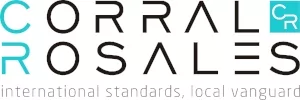Blockchain and other technologies related to distributed databases have been an issue subject to considerable discussion. Today, there are several industries looking into its related possibilities and new uses for blockchain are found every day. However, a question still remains: how could these technologies be used in the context of current Intellectual Property law and practice?
- What is blockchain?
A blockchain is similar to a digital version of a ledger. This chain consists of several "blocks" of information linked through cryptography, meaning that it is protected against any intrusion or modification. One of its main features is decentralization, since it does not reside on a single computer nor is it managed by a particular organization. Rather, the system is made up of multiple computers around the world that verify the data entered and look for inconsistencies so that the system works optimally and independently.
One of the main functions of a blockchain is to provide traceability for a certain product. Traceability refers to the ability to monitor the evolution of a product in its different stages. This ability is of great interest to industries that require strong Intellectual Property protection, including the pharmaceutical, automotive, and luxury goods sectors. Additionally, this technology allows the creation of what are known as Non-Fungible Tokens (NFTs), which can be defined as a digital version of a certificate of authenticity embedded in the blockchain that can represent almost any real or intangible property, including works of art, music, videos, etc.
Initially, blockchain technology was created for the financial sector to track massive amounts of transactions. However, its application has spread to many areas, including copyrights. Here, we can imagine a cinematographic work that has several elements that are also are essential parts of a particular chain (script, production, credits, distribution, etc.). Usually, this information would be stored on shelves, but through blockchain, it can immediately and securely be recorded in your system. This makes it possible to verify exploitation rights in real time through an unalterable and immutable seal. In the case of, for example, a song, with its music and lyrics, the authorship of its components would not be lost despite any merging.
For all of these reasons, blockchain has become a tool with a major potential for protecting works and proving their authorship. However, national legislation neither recognizes nor regulates this technology, which is why any certificate generated through it is invalid in any public procedure, especially considering that digital certificates in Ecuador must be granted by an "Information Certification Entity" controlled by the National Telecommunications Council. This very fact runs contrary to the nature of blockchain, given that its main characteristic is decentralization, which means that its own users manage it and there is no government control (with the exception of what are known as "institutional blockchains," which have not been addressed in this article).
Given the above, blockchain cannot be used in procedures with Ecuadorian public agencies in which on-site interactions and a lack of standardization make procedures slow and oftentimes prone to corruption. For blockchain to be used, laws need to be updated in way that recognizes new technologies, especially those that provide security and speediness when administering data and certificates.
2. Intellectual Property Rights and blockchain
According to commonly accepted legal principles, a blockchain-based product can be classified as intangible or incorporeal property, meaning that, while this asset cannot be discerned by the senses, it does have, regardless, a certain value. A buyer can acquire Intellectual Property rights that are separate from those pertaining to the creator of the underlying work. This is exactly what happens with the purchase of a painting, a book, or a music CD: the buyer becomes the owner of a specific version without exercising any copyright.
This begs the question of who owns the copyright in the underlying work of the blockchain. The short answer is that the creator owns the rights to their work, unless otherwise agreed. For example, when someone buys a painting from an art gallery for their home, they are purchasing the physical painting itself. While they may put this work on display, they do not hold the underlying rights to reproduce, make derivative works of, or distribute copies of that painting.
In the United States, for example, the parties are free to agree on the terms and conditions that govern a transfer of rights to a product connected to the blockchain. However, it is common practice to find adhesion contracts that usually limit the annual income that the buyer can obtain from said asset (for example, the NBA's "Top Shot" platform). In other cases, some companies will tend to agree to restrictive terms and conditions that prohibit any type of exploitation of the asset linked to the blockchain.
This brings us to address whether we can obtain patent protection when it comes to blockchain-supported products.
Regardless of the legal system, "machines" are usually patentable, while "abstract theorems" are not (understanding this to mean mathematical principles that do not provide a technical contribution). This is due to the fact that machines are usually specific products that improve our quality of life, while theorems tend to be scientific principles belonging to the collective. As such, it is understood that they cannot be subject to control or monopolization.
Under our system (Ecuador), any blockchain-supported product is considered a non-patentable idea provided that is governed by code and software. This is the usual form of operation, because for an idea to be patentable, there must be material elements involved. Along these lines, Article 15.e from Andean Community Decision 486 expressly states that computer programs or software are not considered to be inventions. However, Article 4 of Decision 351, also from the Andean Community, provides that computer programs can be protected under copyright, and covers both the source code (human readable instructions) and object code (binaries) of programs. Accordingly, in Ecuador, a blockchain-supported product could be protected under copyright; however, it would not be patentable.
In contrast, the Anglo-Saxon legal system brings together both copyright and industrial property under the concept of Intellectual Property, which implies greater flexibility when it comes to negotiating rights. As a result, the owner of a work can lose control of it by giving up their copyright, since moral rights are not exercised together with economic rights. In other words, there are no limits to exploiting a work, unlike the copyright system (applicable in Ecuador), which is based on protecting the moral right of the work.
Walmart, for example, registered a patent in the United States on a blockchain-based online shopping optimization algorithm. This is an integrated payment system that helps the buyer to choose their products in greater detail. It also automatically distributes payments on the blockchain among Walmart employees or vendors who worked on a certain process. Under this example, a computer program can be protected as it has been proven to provide added value to a specific process whose results are perceptible to the outside world.
Another example of program protection that produces a noticeable technical effect is Bank of America's patent No. 10,643,202, which involves a real-time transaction processing system based on blockchain. This system reduces the previously known time per transaction and its adoption could greatly enhance electronic commerce, especially for tools such as Apple Pay or Google Pay.
Consequently, most of the applications filed on blockchain patents come from the Anglo-Saxon system, especially from countries such as the United States, Canada, and England. Regardless, it is not easy to prove that a blockchain system is not part of common scientific knowledge, as there are several research papers and countless articles that explain the bases of its algorithm, including a publication by Satoshi Nakamoto, the presumed pseudonymous person or persons who is (are) recognized as having developed Bitcoin. Even so, numerous patents have been accepted in cases where the filed application directly links the code to a machine's operation, presenting this set as an invention that improves existing technical qualities and solves a specific problem in an innovative way. This makes it possible to obtain greater probabilities of patenting a technological invention, unlike what occurs in Ecuador, where software is expressly excluded from patentability.
Conclusion
In conclusion, the task at hand is to review an outdated Andean standard that does not recognize new fields and opportunities arising from the digital environment. It would also be advisable to replace references to "computer programs" with "information technology programs" in order to clearly include mobile applications (apps) or Dapps (applications that run within a blockchain) within the scope of said standard.
Further, it seems like the absolute impossibility of patenting computer programs is inappropriate under certain circumstances. While such programs are automatically copyright-protected from the moment of their creation, certain programs do require patenting since an innovative solution is brought to the table.
The content of this article is intended to provide a general guide to the subject matter. Specialist advice should be sought about your specific circumstances.


